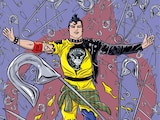There doesn't seem to be much of anything in the DC Universe that writer Ram V can’t do. He’s pulled off the heist of a lifetime in his Catwoman. Explored the depths of arcane mystery in Justice League Dark. Put the Black Label mark on Aquaman with Andromeda. Taken Batman to operatic heights in Detective Comics. Now, Ram faces his greatest challenge yet. He has six issues to get readers on board with an entirely new group of characters, with no prior concrete attachments to the DC Universe. Oh, yes—and every member of the team is Indian.
Still, nobody’s gone broke betting on Ram V before, something that was not lost on us as we spoke to him about this intriguing, conspiracy theory-laden new title.
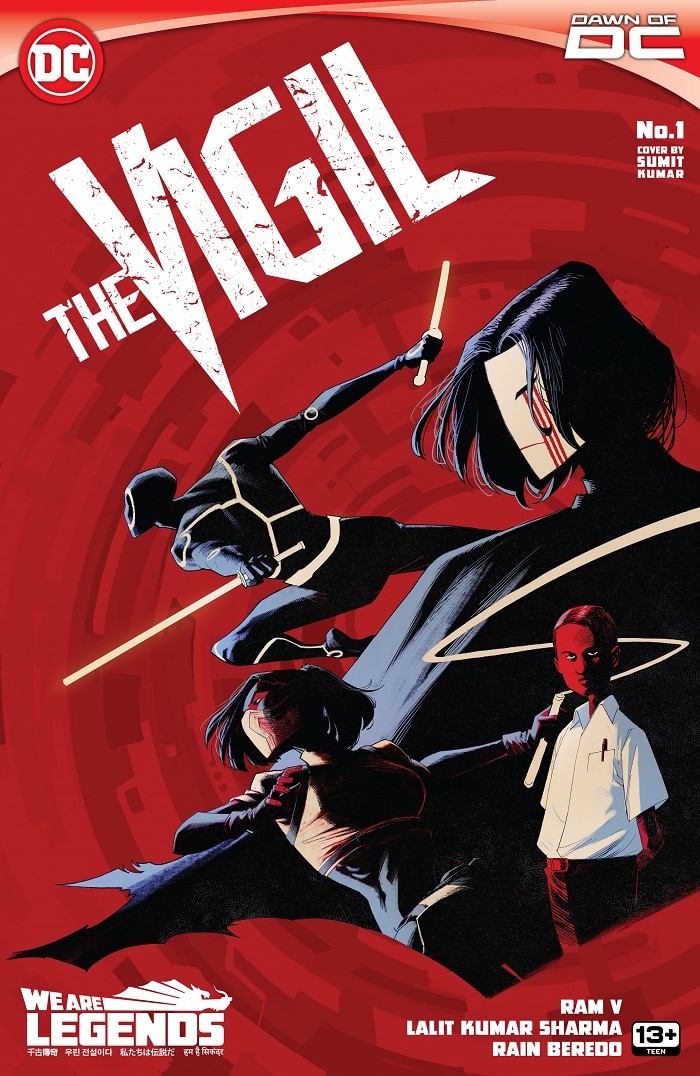
When I saw The Vigil, two things came to mind from the logo alone. The first is, it’s the first half of the word “Vigilante.” It even looks like the Vigilante logo. That can’t be unintentional. What are we evoking here?
I just like the idea of going back to that original superhero concept. Before these were things we had statues and lunchboxes of, they were vigilantes. They were people who functioned outside of the system. That original idea of the vigilante is super interesting to examine, especially changing the context of what society they’re from. So far, most of the vigilantes we’ve looked at have been from American societies, or Europe, or some neighboring analogue of that. But we haven’t really seen that in the context of India. And I thought that was a really interesting thing to explore. Hence the doff of the old cap to the old school “vigilante.”
This is a brand-new six-issue series, starring a new team of characters that we’re unfamiliar with. What can you tell us about these individual members of the Vigil? Who are they? Introduce us to the lineup.
The Vigil essentially is made up of four individuals. The person who leads the team is a character called Arclight, who as you might imagine has electricity powers.
Very cool design.
Yeah, thank you. The second member of the team is a character called Dodge. She has extraordinary reflexes. Not necessarily a speedster, but someone who can quite literally dodge nearly anything you can throw at her.
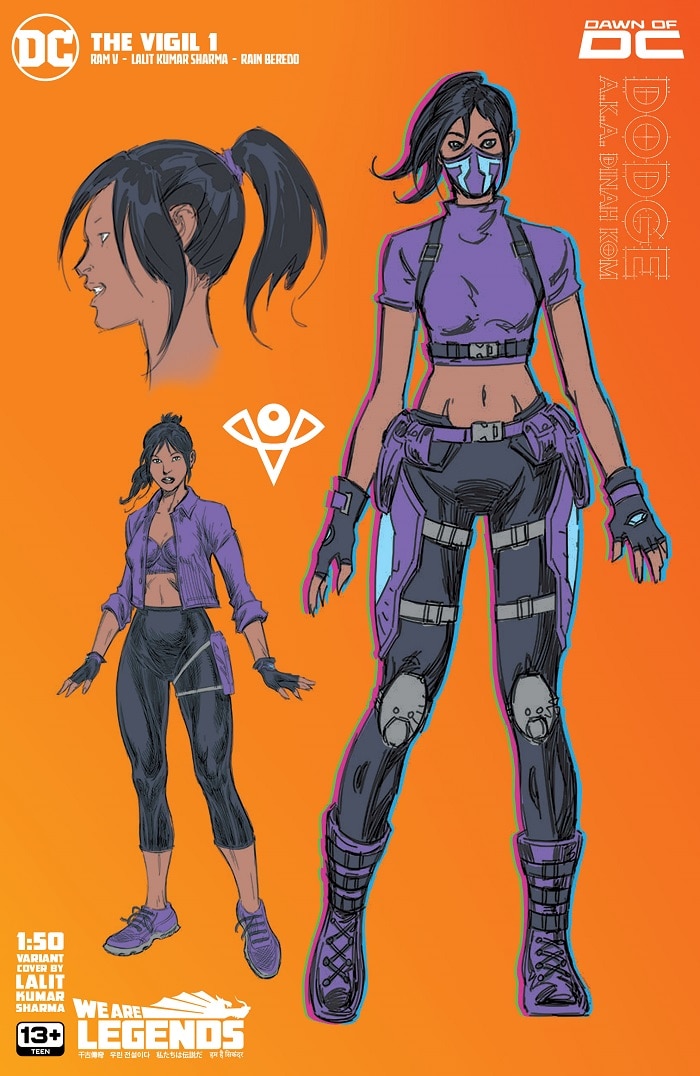
As Red Hood discovers in Lazarus Planet.
Yeah, including Red Hood. (laughs) The third is a character called Saya, who has kind of infiltration, taking on others’ identity powers, if you will. Which comes with its own limitations, though.
The fourth member of the team is an innocent, twelve-year-old boy called Castle, who might just be the most dangerous sociopath we’ve ever encountered.
Those are outwardly the first four members of the Vigil that you will encounter. And I think that one thing that is quite unique about these characters is that these are people who were otherwise broken in a lot of different ways. Some of them psychologically, others given their physical anomalies. And the Vigil has enabled them to take that and turn it into something they can use. And that has all kinds of implications, which we will see play out as we go on.
We’ve spoken before about wanting to specifically establish a stronger South Asian presence in the DC Universe, which you’ve done in all your titles, but you’re really doubling down on in The Vigil here. How does these characters’ heritage inform who they are?
In the structure that these first six issues follow, you get an introductory issue where you meet these characters. But then, every issue following that does a narrative twist which links back to something quite specific in the history of these characters. So, where they come from, the things they’ve encountered in their past and how their society reacted to it, and how they reacted to it, has a very telling effect on the characters themselves.
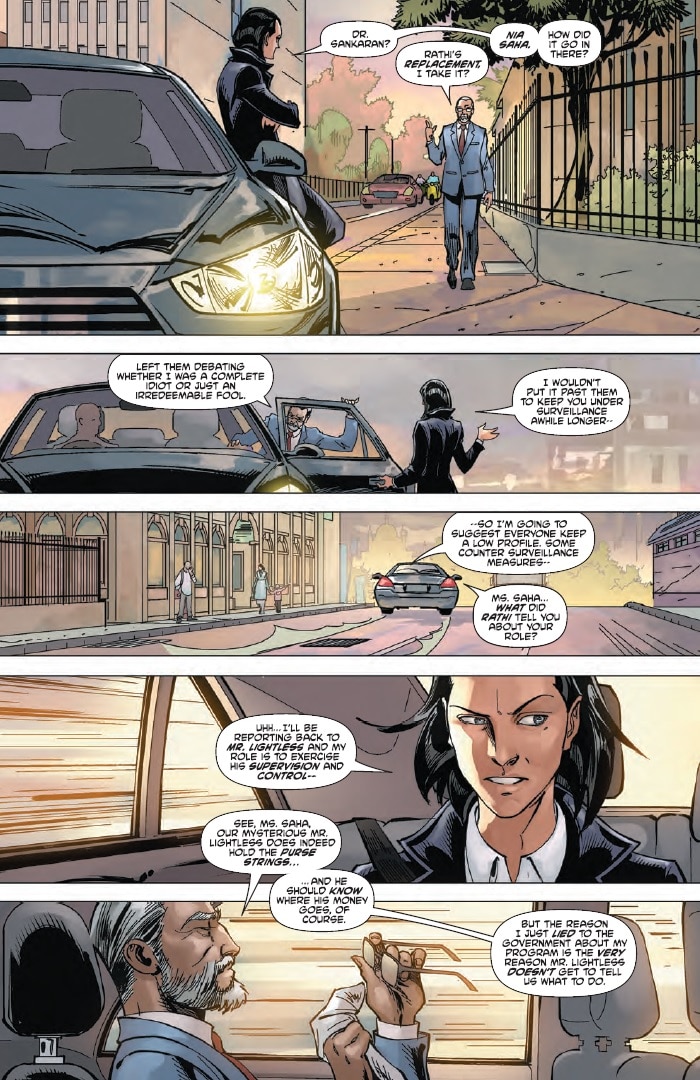
For instance, one of the characters, his past is kind of an analogue to the Bhopal gas incident in India, which affected generations of people. So there’s a mirror held up to that, there’s a mirror held up to communal tensions in India. Not all these characters are of the same religion, so we’ll see that play out. That probably is as much of an issue in any country, but it’s very specific to the cultural background where you come from. And I have things to say about that, because it’s my background.
So, I’m bringing all of that into the comic. These are 3D, real people. At least, I write them that way. And so you’re likely to see all of those things factor into who these characters are. That said, I also want to say that…it’s just a cool sci-fi book about people trying to prevent conspiracies, or trying to counteract conspiracy theories that might be true. I feel like stories shouldn’t exist to demonstrate why South Asian/Southeast Asian characters are interesting. They just are! They’re denizens of the world. You should really just come here for the story, and then find yourselves, and find representation, and find people like you, like your friends, like your neighbors in the book.
As you alluded to, the Vigil is essentially a team of conspiracy theorists. But I feel like, in the past twenty years, what “conspiracy” is and what it means to the culture has changed a lot. There are three different kinds of conspiracies, essentially. There’s the fun kind, like the aliens and cryptids that THEY don’t want you to know about. There’s the disturbing kind, like the ones we only see hints of in classified document leaks. And then there’s just the evil kind of conspiracy, which is used by radical groups as a mask for bigotry, xenophobia and demonization of political enemies. How does The Vigil investigate the concept of conspiracy?
So, firstly, I want to say that all these conspiracies have always existed. We just know of them, specifically as you delineated them, because we are aware of being exposed to them. Through the internet, the conversations between people have gotten a lot more crowded and a lot more loud. And so, we’re suddenly aware of a lot more voices, and some of them are pretty out there. I’ve always found conspiracies to be a very interesting facet of any society. They existed pre-World War, they existed during the Reformation, they existed during the French Revolution. They’ve been with us for a very long time.
That said, you’re absolutely right that there are these three kinds of conspiracies, and they’re all equally interesting to combat. The fun kind, they make for good entertaining stories. But then, as you said, there are the kind that are more surreptitious and radicalize people. That’s also an interesting thing to tackle. There’s also a very human story to explore there, because I think those kinds of conspiracies tell us about where we’re going, and how we’re changing as a society. If you think back to the ’70s, ’80s, ’90s sci-fi conspiracies, you had, “Electrical wires are actually alien subliminal messaging, and it’s telling us to obey our overlords!” That was the kind of conspiracy you had back then.
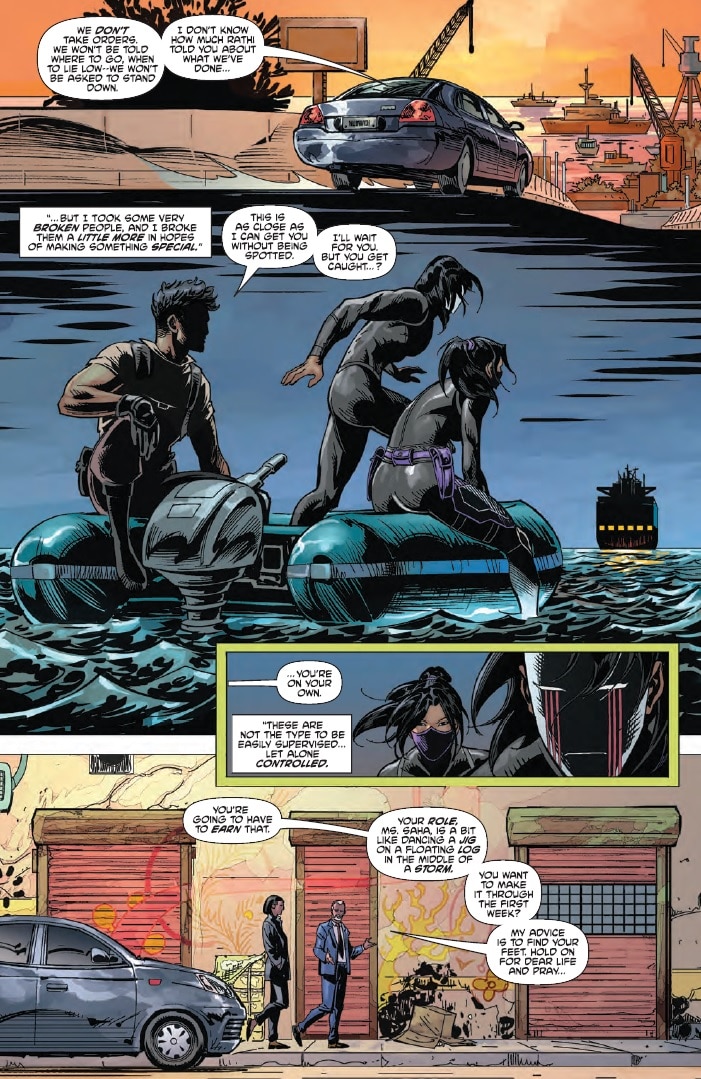
And now you have, “5G satellites are controlling our minds!”
Yeah, exactly. But it becomes so much more mundane, you know? “5G satellites are controlling our minds” not because aliens want to be our overlords, but because 5G satellites want me to vote one way, or something like that. You know what I mean? And so, the level of mundanity that has crept into these conspiracies. Like, even if you thought there was a conspiracy behind vaccines, the harm that you’re doing by not having it is passing on a virus to someone else. So you might as well have it, you know? Even if for whatever reason you believed all of these obscure things, the mundanity that you’re reacting to is so banal.
And I think that’s because, as a society, we have lost our fascination for the things that we used to be fascinated by. “Is there going to be teleportation?” “Are we going to be moving through time?” And now it’s like, “Okay, well what’s the next app that I’m going to have to download on my iPhone?” And I think the loss of that fascination for our future is an interesting facet to explore. But I’m doing it by holding up the opposite mirror. Like, what if there were people behind the scenes, whose job it is to make your world more absurd? How would you react then? And the Vigil’s job is to make sure they don’t succeed.
These vigilantes were originally part of a government-sponsored program. In a sense, we’re looking at the failures. The ones they’re trying to sweep under the rug.
Or, at least, perceived failures. So what does that mean in a place like India? Because, yes, we have these super structures, corporations, government, that are trying to define its sense of right and wrong, right? But in our issue #1, we have these characters who have broken out of that and are trying to forge their own path. But is it possible to have a sense of right and wrong in a place like India, which is not a binary place? It is a place of multitudes and diversity of opinion and background that is quite rare in the rest of the world. And so, is it possible to be a good guy in a place that has a very hard time defining what good and bad is?
I think that’s more interesting for me to explore, so that’s the direction I’m taking that in. Plus, all these big organizations acting behind the scenes to control the metahuman narrative. Isn’t that just another conspiracy?
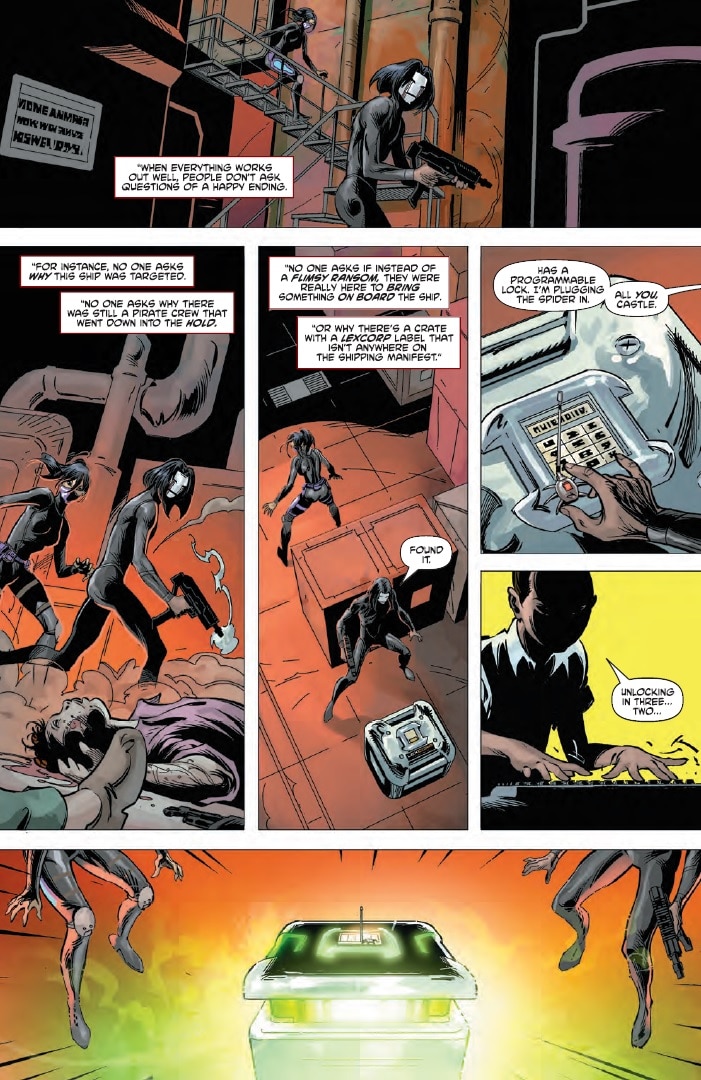
Here’s my big question. The Vigil is currently a six-issue series. It’s a very tall order to get an audience on board with an entire team of new characters in a new setting. How are you going to get our attention? How are you going to get readers to say, “Hey, we want to see more of this?”
To be very honest, by telling a good story. By telling a story where you care about these characters. It would be very easy to give you an answer like, “Oh, yeah, in issue #3, this huge character from the DCU shows up!” (Which they do.) “And in issue #1, we make a reference to LexCorp, so what’s gonna happen with that? And then there’s Red Hood’s involvement…”
I could tell you all of those things. But it’s all meaningless if you’re not interested fundamentally in the story and the characters. And so, my aim over these six issues is to get you to care about these characters as people. Care about their story, in a very human sense.
Beyond that, my job is to entertain you. To take you to parts of the DCU that you might not have considered. Back when I was growing up in India, there were these bootleg DC characters in Indian comics. So you had a knockoff of Superman and Batman present in this alternate universe where an Indian superhero had to save them from the villain. But now that I’m writing in the DCU, if we are to believe the conspiracy premise that multiple realities are real and superimposed on top of each other, then you have Bootleg Batman and Bootleg Superman running around somewhere in an alternate reality. And now I have an opportunity to bring those guys in and go, “What happens now when these alternate versions are present in the DCU and don’t like their subpar ranking?”
If all universes are real, then even the Bootleg Superman is real.
Exactly. Things like that become possible, which is the direction I see the story taking. Frankly, I don’t see a lot of stories that continue to do that now. There was a time that we had these stories that were capable of looking at these massive universes with tongue-in-cheek humor, metafiction, lateral thinking and all that. I’m kind of excited to take it in that direction.
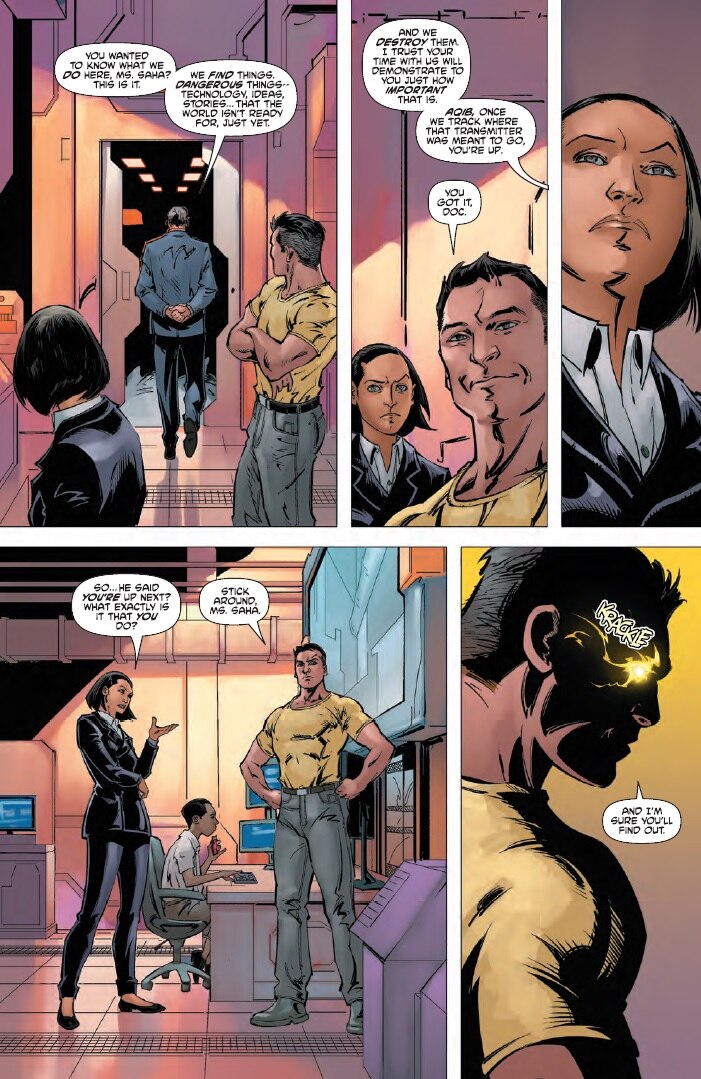
Right, there is comedy in this book. There are jokes in this. I think it’s important people know that.
Yes! There are also other things you would find funny looking outside at a comic universe. It’s something I think is a product of my Indian background, because I grew up with Indian mythology being told to me as stories, and I think it’s one of the last surviving pantheonic mythologies and religions still in existence. And the similarities between Indian mythology and a comic book universe are just hilarious. Staggeringly funny. To be able to use that idea of contradiction and meta-narrative and the meanings of these big beats that we see, I think that’s very interesting. And we’re going to see a lot of that. The acceleration of absurdity in this book between issue #1 and issue #2 is already pretty high, but it just rises exponentially. By issue #6 you’re going to be asking, “What the hell is going on?”
One last question! You previously wrote my favorite character, Vic Sage, in DC Crimes of Passion. You’re teasing out Renee Montoya’s relationship with the mantle in Detective Comics. Now you have a book about conspiracy theorists happening, the thing that the Question has been about since like 2004. What are you up to with my boy?
Umm…you’ll have to see. First, you’ll have to see on the pages of Detective, it may not be Vic Sage, but the Question has an important role to play in Detective first. And as for who shows up in The Vigil, considering the idea of the Vigil spans the entirety of the DCU, who knows? It is a GOOD QUESTION to ask.
The Vigil #1 by Ram V, Lalit Kumar Sharma and Rain Beredo is now available in print and on DC UNIVERSE INFINITE.















